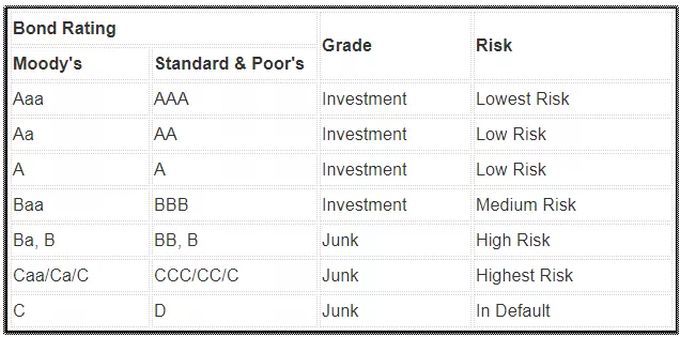Ten years ago, the budget hearings in Shelby County Government had become heated with both superintendents of the two school districts of the day complaining that a change in the decades-old way that education was funded would result in less money for operations and plunge the districts into yearly political turmoil.
They were right.
In what has been called by an experienced observer the most blatant anti-schools decision by county government, school officials were ignored and budget policy was changed with only Commissioner Henri Brooks objecting. “You are compromising the integrity of this process,” she said. “(The public) invested dollars they thought were going to education, and now you are redirecting it in a way you see fit.”
In that contentious budget year, a sentence was added to the tax rate ordinance that allowed Shelby County Government to hold some of the property tax funding from schools from one year to the next: “Be it further resolved that should the amount collected for schools exceed the amount appropriated for Fiscal Year 2008, the excess of collections over the amount appropriated shall be held in the Education Fund and be applied” to the future budget.
The change fundamentally upended the way county government had funded schools for decades as it moved from allocating schools funding from county tax sources to limiting the school districts to a specific amount of funding.
Not a Change for the Better
Over the past decade, this change cost schools millions of dollars a year in operating money and resulted in the districts being thrust into regular contentious budgetary debates about education funding, all while school operating funds took direct hits from other changes in county budgets and from a lack of action to make education whole in the PILOT programs, costing schools millions more a year.
The disagreement between education officials and the Wharton administration about the change in funding philosophy was ultimately dependent on approval by the Shelby County Board of Commissioners.
For example, in the year before the change was approved, Shelby County Government had a $4.04 property tax rate (excluding the special five cents for rural school construction), and education received $2.02. If the policy remained the same, education would continue to receive all the revenue from the $2.02, including whatever annual growth came from the $2.02.
The change proposed by Shelby County Mayor A C Wharton and his finance officials can be seen in budget documents, which suddenly included an education fund section that specified how much schools would receive rather than just setting out the property tax rate and other school tax source allocations.
No More Natural Growth
County finance officials argued that the specific amount that was included in the budget was the equivalent of 50% of the property tax rate, but school officials – Memphis City Schools Superintendent Carol Johnson and Shelby County Schools Superintendent Bobby Webb – were skeptical, arguing that it would allow county government to back off its funding commitments and end the districts’ yearly increases.
“We count on the natural (tax) growth to help take care of the additional thousands of students each year, not to mention inflation,” said Mr. Webb, and Ms. Johnson argued that the decision raised legal questions, saying: “This attempt is really at variance with how every other school district gets funding. Taxpayers believe they have set aside money for education and for students. It raises serious legal questions and serious good-faith questions.”
The superintendents’ concerns proved to be well-founded.
For the six years following the change, operational funding for schools remained flat – at $361,288,000, and when it was increased to $381,288,000 six years later and $391,288,000 nine years later, the increase amounted to 8.3% while property tax revenues had increased by 10.8%.
A Direct Hit to School Budgets
“The change in funding from tax allocations to a definite amount during the Wharton administration was a blatant anti-schools move to keep schools from receiving any growth money from their county revenue sources,” said Jimmie Covington, veteran journalist and expert in school funding, and most of all, someone not given to hyperbole. “I believe that commissioners who support setting a definite amount for schools are taking an anti-schools position whether they understand it or not.”
Through the years, Mayor Mark Luttrell’s administration has carried forward the approach adopted in the Wharton administration.
In the current budget recommendation for Fiscal Year 2018, the Luttrell Administration – which has no responsibility or authority for schools – recommended the reduction of three cents in the pre-certified property tax rate for education so they could increase funding for county departments. Meanwhile, the county’s proposed budget for schools is set to remain the same as it was in the previous year – $419.5 million – although the amount of property tax revenues is projected to grow by 3%.
Again, schools would be cut out of any property tax growth money.
Not Schools’ Job
Mr. Covington said a check shows that a proposed county tax rate ordinance on the county’s website does not include the funding holdback language developed during the Wharton administration. If the language is being dropped, it is unclear what the implications are.
The change by the Wharton administration does not mean that school budgets never increase. It just means that the increase is not assured, and since the school budget is always up for debate, it results in sometimes heated arguments during the county budget process.
In the past 10 county budgets, school funding was increased only four times while property tax revenues only declined two times.
The significant increase in the appropriation to education in Fiscal Year 2017 essentially resulted in school funding catching up with property tax revenues growth, but it obscures the middle year doldrums in school funding that took place between Fiscal Year 2008 and Fiscal Year 2016.
Somewhere in those years, Shelby County broke out the school debt into its own category although it had always been part of the Capital Improvements Project (CIP) budget. For the cynically minded, it was another way to obfuscate school funding and to inflate the percentage of property taxes going to schools to avoid political blowback and confuse budget deliberations. For example, it allows county officials to shift schools’ operating money to debt service while making the politically convenient argument that school funding has not been cut.
But, here’s the thing: capital costs are county government’s responsibility, not the school districts’.
All in all, only a handful of people understand the procedure that changed school funding, and it often seems that these don’t include many people among school board members and commissioners. That’s not necessarily their fault because the procedure has never been properly and fully outlined, and questions about it are met with a blizzard of financial jargon that is often impenetrable.
Here’s the headline: the change in procedure cuts school operations off from any growth funds from the property tax rate allocated to schools and limits schools to the amount approved in the county budget. It also opens up opportunities to shift school money to debt service although that is the sole responsibility of Shelby County Government.
A Million Here, A Million There
Meanwhile, never discussed at county budget hearings is the way that schools lose money every time a tax freeze is approved. These PILOTs waive about $70 million a year in city and county taxes, but in response to criticisms about the overreliance on these tax freezes and their negative impact on school funding, Shelby County Government changed the policy years ago to limit the tax waivers to 75% of the new property taxes.
It was said at the time that the revenues produced by unfreezing 25% of the property taxes would be directed for school operations.
Two problems: One, schools have traditionally received about 50% of the property tax rate so 25% still shortchanges them by half, and two, some years ago, the money from the 25% was moved from schools’ operating budgets to paying debt service for schools. This was a total shift from the original justification for the 25% unfrozen amount.
Today, this means that about $10 million a year – the amount produced by the 25% – is used for debt service and deprived from the operating budget for schools. Also, if schools were made whole and the policy was changed by the board of commissioners so only 50% of the property taxes could be frozen by PILOTs, schools could receive an additional $10 million a year. It is often stunning how silent politicians are about tax freezes during budget hearings, even as they are scraping for every dollar and having difficulty finding enough money for schools.
***
Thanks to Jimmie Covington for his help with this blog post.
***
Join us at the Smart City Memphis Facebook page for daily articles, reports, and commentaries that are relevant to Memphis.





